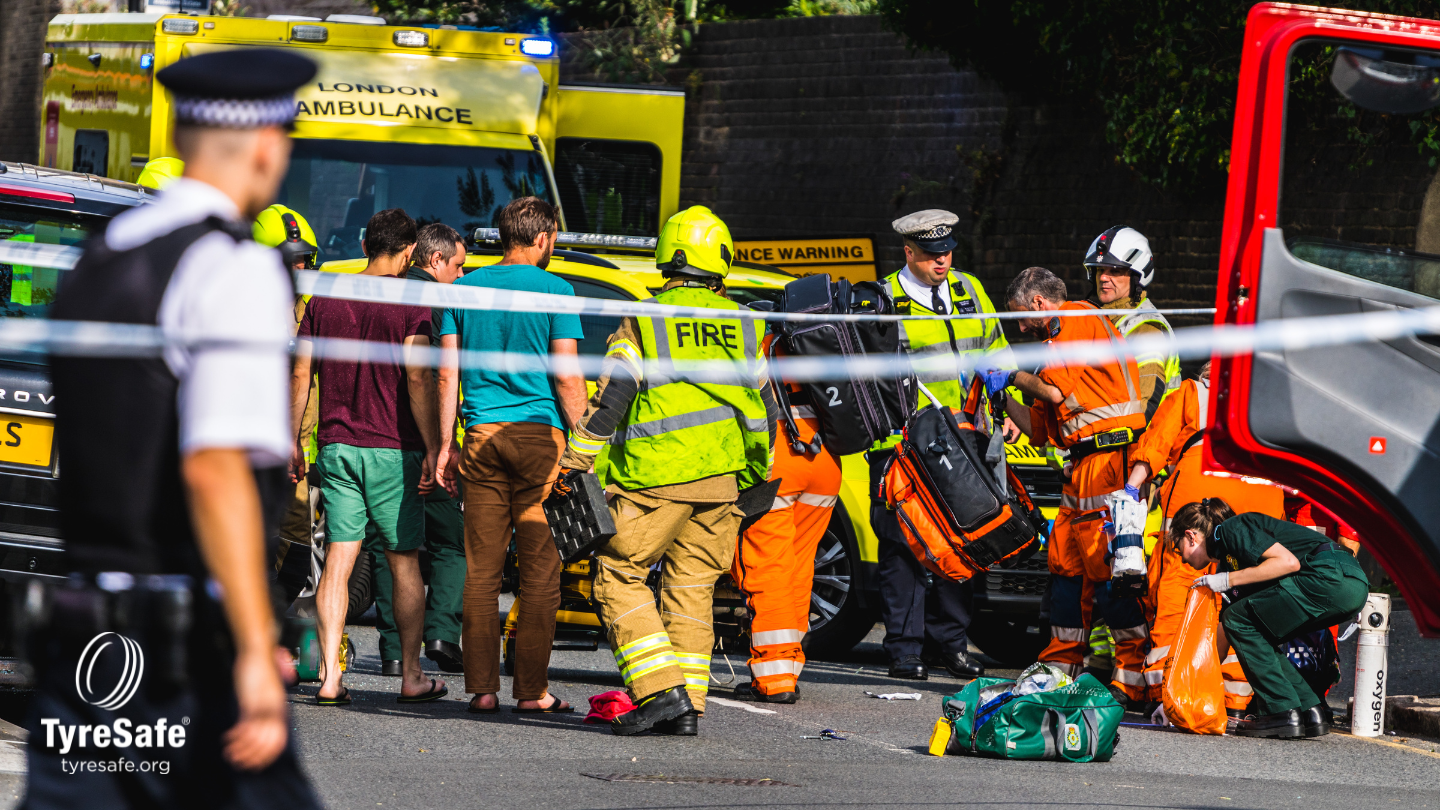As the only point of contact between your car and the road, your tyres need to perform perfectly every time you get behind the wheel – this means that (pardon the pun) they cannot crack under pressure! Understanding tyre cracking is an essential part of being a safe driver and keeping your vehicle in tip-top condition.
In this handy guide, we’ll explain what tyre cracking is, break down the common causes for it, and show you how to spot cracking in your tyre tread and sidewall. We’ll also explain how to prevent and address this tyre defect and answer some of your frequently asked questions.
What is tyre cracking?
Cracking is a tyre defect that occurs when the polymer bonds in the rubber begin to degrade, creating visible ‘cracks’ along the surface of the tyre. These usually occur on either the sidewall or the tread and while they might start small, they can widen and deepen over time.
Cracks compromise the structural integrity of your tyre, which can lead to a rougher ride, punctures and deflation at best, and a loss of traction and blowouts at worst.

Why do tyres crack?
There are a few different reasons your tyres may crack.
Ageing
Over time, the rubber in tyres naturally degrades and breaks down. This makes tyres hard, brittle, and more susceptible to cracking. This can happen with regular driving and the wear and tear that comes with that, but rubber degradation can happen even if you drive your vehicle infrequently. In fact, it is recommended that you do drive your vehicle frequently, as this helps to release the chemical that prevents tyres from drying out!
For this reason, motorcyclists and motorhome drivers, who may store their vehicles for the winter and bring them back out for spring and summer, should be extra-vigilant about tyre cracking.
Under or overinflation
Under or overinflating your tyres can also lead to cracking. If your tyres aren’t inflated enough, the sides of the tyre will flex more and connect with the road. This can create a build-up of heat and friction which can lead to cracking. On top of this, underinflated tyres can also impact traction and by extension, how quickly your car responds to braking.
Similarly, over-inflated tyres can cause problems. If your tyres are over-inflated, more pressure is being applied to the tyre walls, reducing the rubber’s ability to flex and respond to the road conditions. With this greater stress and reduced flexibility, the rubber can become stretched and overheated and as a result, brittle and prone to cracking. Over-inflated tyres will also wear unevenly and be less able to absorb impacts, like debris or potholes.

UV rays & heat
UV rays and temperature fluctuations can also cause tyre cracking. Whether you create heat through friction, or it is just something your tyre is subject to on warmer days, heat impacts how the rubber polymers behave. The polymers expand in the heat and contract in the cold. And, over time, this repetitive cycle of expansion and contraction can deteriorate and weaken the rubber, leading to cracks.
UV rays can also cause tyre cracking through a chemical reaction that oxidises – or breaks down – the rubber compounds, making them harder and less flexible. This is one of the reasons that tyres are black! Carbon black helps to shield the rubber against UV rays by distributing and dissipating their effects.
Water
While your tyres are largely waterproof – they aren’t entirely waterproof! This is particularly the case if they are already showing signs of wear or if you regularly drive in wet or icy conditions. If water penetrates the rubber seal, it can break down the rubber molecules over time, making the rubber less flexible and more vulnerable to cracking. This process can be sped up by the freeze-thaw cycle, where water molecules expand and contract the rubber molecules with seasonal fluctuations in temperature.
How do you know if your tyre is cracked?
It’s important to identify and deal with tyre cracks as quickly as possible. Here are some things to look for when examining your tyres:
- Visible cracks on the sidewall or tread – These might be fine lines or larger ‘cuts.’
- Signs of discolouration or dryness – Your tyres may have a faded or chalky appearance or feel stiff to the touch.
- Bugles or deformities
- Wear or damage to the tread
- Underinflation
You might also notice issues while driving. Your drive may feel less smooth, and your vehicle may make unusual noises or handle poorly. If you have a Tyre Pressure Monitoring System (TPMS), it might warn you about issues with your tyre pressure.
Tyre sidewall cracking
If your tyre sidewall is cracking, it may look like this:

Tyre tread cracking
If your tyre tread is cracking, it may look like this:

How to prevent tyre cracking
There are some actions you can take to prevent your tyres from cracking. You should:
- Park in shaded or covered areas or use tyre covers to protect your tyres from UV rays
- Clean your tyres regularly to prevent the build-up of dirt, oil or fungus that can break down the rubber compounds
- Drive regularly and drive mindfully, trying to avoid rough surfaces
- Rotate your front and rear tyres to evenly distribute wear and tear
- Keep an eye on the age of your tyres – which you can find on the tyre sidewall.
You should also regularly check your tyres to make sure they are in optimal condition, have the correct tyre pressure, and have the proper tread depth.
FAQs
Still have questions about tyre cracking? We’ve answered some of your frequently asked questions below.
Is it safe to drive on tyres with cracks?
No. If you notice cracking on your tyres, you should get them replaced as soon as possible. While cracks may start as relatively small and inconspicuous, they can develop quickly and should be treated seriously.
Is tyre cracking an MOT failure?
Your vehicle will fail its MOT if there are any signs of cracking on the sidewall or tread.
Can you repair cracks in tyres?
Unlike punctures, cracked tyres cannot be repaired. This particular tyre defect is a permanent and irreversible breakdown of the rubber components and as such, repairs aren’t safe or cost-effective.
Learn more about tyres and tyre safety
At TyreSafe, we are dedicated to raising awareness of the importance of tyre safety. Stay safe and sound and road-ready with our tyre help and advice.



